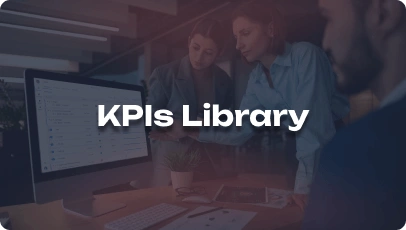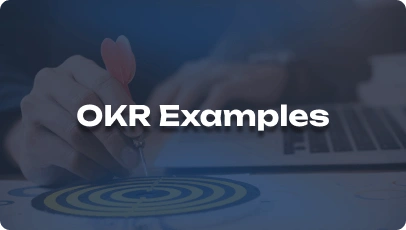Public Policy Analysts play a crucial role in the Government/Policy industry by analyzing and evaluating public policies to ensure they are efficient, effective, and aligned with the needs of society. Mastering the skills of a Public Policy Analyst can contribute to success by informing decision-making processes, shaping legislation, and addressing complex societal challenges. In today’s rapidly evolving landscape, Public Policy Analysts face the task of navigating intricate policy issues, leveraging data-driven insights, and fostering collaboration among diverse stakeholders.
1. How do you stay updated on current government policies and regulations?
I regularly monitor government websites, subscribe to policy newsletters, and attend industry conferences to stay informed.
2. Can you describe a recent project where you conducted a comprehensive policy analysis?
Yes, I led a project analyzing the impact of a new environmental policy on local businesses, conducting stakeholder interviews and data analysis to assess its effectiveness.
3. How do you approach gathering and analyzing data to inform policy recommendations?
I use a combination of quantitative and qualitative methods, ensuring data integrity and relevance to develop evidence-based policy recommendations.
4. What role do you believe technology plays in modern policy analysis?
Technology streamlines data collection, analysis, and visualization, enhancing the efficiency and accuracy of policy analysis processes.
5. How do you ensure your policy recommendations are feasible and implementable within government structures?
I collaborate closely with policymakers, stakeholders, and experts to align recommendations with political realities and administrative capacities.
6. How do you navigate conflicting interests among stakeholders when analyzing policy implications?
I facilitate open dialogues, focus on common goals, and seek creative solutions that address diverse perspectives and interests.
7. In your opinion, what are the key challenges facing public policy analysts in the current political climate?
The polarization of political ideologies, rapid policy changes, and managing public expectations pose significant challenges for public policy analysts.
8. How do you assess the effectiveness of a public policy initiative or program?
I track key performance indicators, conduct impact evaluations, and solicit feedback from stakeholders to assess the outcomes and effectiveness of policy initiatives.
9. Can you explain the process you follow to identify gaps in existing policies and propose improvements?
I conduct thorough policy reviews, engage with subject matter experts, and analyze feedback from affected populations to identify gaps and propose evidence-based improvements.
10. How do you approach communicating complex policy analysis findings to non-technical stakeholders?
I use clear language, visual aids, and real-world examples to simplify complex information and ensure stakeholders understand the implications of the analysis.
11. How do you prioritize policy issues when working on multiple projects simultaneously?
I assess the urgency, impact, and alignment with organizational goals of each policy issue to prioritize effectively and allocate resources accordingly.
12. What strategies do you employ to ensure objectivity and impartiality in your policy analysis?
I remain transparent about my methodologies, seek input from diverse perspectives, and continuously challenge my own biases to maintain objectivity in policy analysis.
13. How do you approach building relationships with key stakeholders in the government and policy arena?
I prioritize open communication, active listening, and building trust through consistent engagement to cultivate strong relationships with stakeholders.
14. Can you discuss a time when you had to adapt your policy analysis approach to unexpected circumstances?
During a sudden policy shift, I quickly reassessed my analysis framework, gathered updated data, and collaborated with stakeholders to adapt the policy recommendations effectively.
15. How do you incorporate feedback from policymakers and other stakeholders into your policy analysis process?
I actively seek feedback throughout the analysis process, incorporate diverse perspectives, and adjust my approach based on the input received to enhance the quality of policy recommendations.
16. What role does public opinion and feedback play in shaping public policies, and how do you integrate these factors into your analysis?
Public opinion and feedback provide valuable insights into societal needs and preferences, guiding the development of policies that are responsive and reflective of community interests.
17. How do you leverage data visualization tools to enhance the presentation of your policy analysis findings?
I use data visualization tools such as charts, graphs, and dashboards to present complex data in a visually compelling and easily understandable format for stakeholders.
18. Can you provide an example of a successful policy change or implementation influenced by your analysis and recommendations?
Yes, my analysis of healthcare policies led to the implementation of a preventive care program that resulted in improved health outcomes and cost savings for the community.
19. How do you approach assessing the potential unintended consequences of a proposed policy change?
I conduct scenario analysis, consult with subject matter experts, and engage in risk assessments to anticipate and mitigate potential unintended consequences of policy changes.
20. How do you ensure your policy analysis remains unbiased and free from external influences?
I adhere to professional ethics, disclose any potential conflicts of interest, and maintain independence in my analysis to ensure objectivity and integrity in policy recommendations.
21. What strategies do you use to advocate for evidence-based policy decisions in a politically charged environment?
I emphasize the importance of data-driven decision-making, present compelling evidence, and engage in constructive dialogues to promote the adoption of evidence-based policy decisions.
22. How do you assess the impact of global trends and events on local government policies, and how does this influence your analysis?
I monitor global trends, assess their implications on local policies, and integrate relevant insights into my analysis to provide a comprehensive understanding of the policy landscape.
23. Can you discuss a time when you had to collaborate with cross-functional teams to address a complex policy issue?
Yes, I collaborated with legal, finance, and communications teams to address a regulatory compliance issue, leveraging diverse expertise to develop a comprehensive policy solution.
24. How do you evaluate the effectiveness of public-private partnerships in achieving policy objectives?
I assess key performance indicators, stakeholder satisfaction, and the alignment of outcomes with policy objectives to evaluate the effectiveness of public-private partnerships in achieving policy goals.
25. What strategies do you use to engage with marginalized communities and ensure their perspectives are included in policy analysis?
I conduct targeted outreach, establish partnerships with community organizations, and prioritize inclusive engagement strategies to amplify the voices of marginalized communities in policy analysis.
26. How do you approach addressing ethical considerations in policy analysis, particularly when dealing with sensitive or controversial issues?
I adhere to ethical guidelines, respect diverse viewpoints, and engage in open dialogues to navigate ethical considerations sensitively and transparently in policy analysis.
27. Can you discuss a time when you had to present a policy analysis report to senior government officials? How did you ensure the report was compelling and actionable?
During a presentation to senior officials, I focused on key findings, recommendations, and implications, using clear language and visual aids to convey complex information concisely and facilitate informed decision-making.
28. How do you approach evaluating the long-term sustainability and impact of policy decisions on communities and the environment?
I conduct sustainability assessments, engage with environmental experts, and analyze potential social and environmental impacts to evaluate the long-term sustainability and positive outcomes of policy decisions.
29. Can you discuss a time when you had to advocate for policy changes based on emerging trends or societal needs?
Yes, I advocated for policy changes to address emerging technology trends, conducting research and engaging with stakeholders to highlight the need for regulatory updates to meet evolving societal needs.
30. How do you adapt your policy analysis approach to address the challenges posed by digital transformation and the increasing use of technology in governance?
I leverage data analytics tools, cybersecurity expertise, and digital literacy to enhance my policy analysis capabilities and address the challenges and opportunities presented by digital transformation in governance.
31. How do you approach evaluating the cost-effectiveness of policy initiatives and balancing budgetary constraints with policy objectives?
I conduct cost-benefit analyses, assess return on investment, and prioritize resource allocation based on policy objectives to ensure cost-effectiveness and alignment with budgetary constraints.






